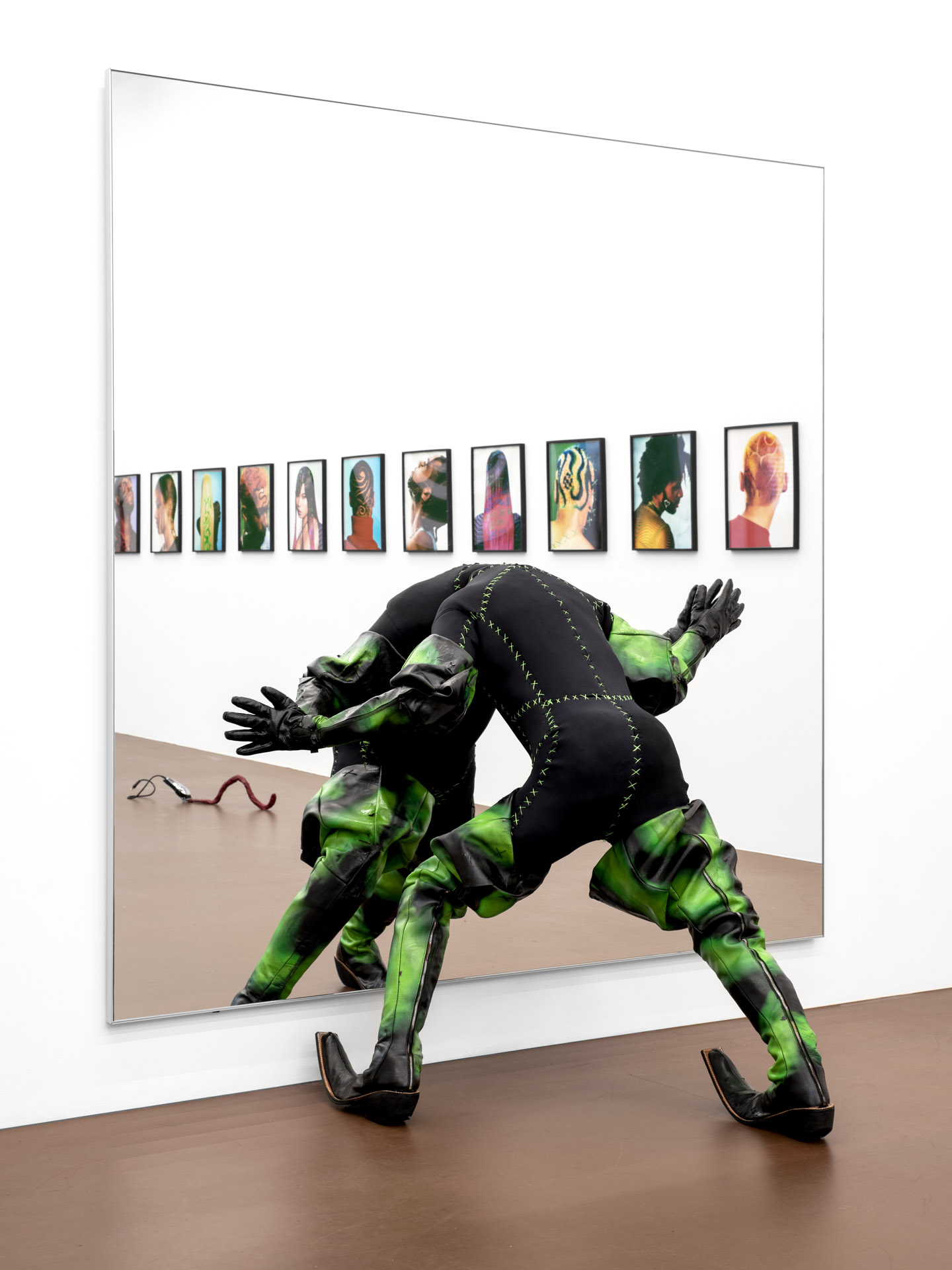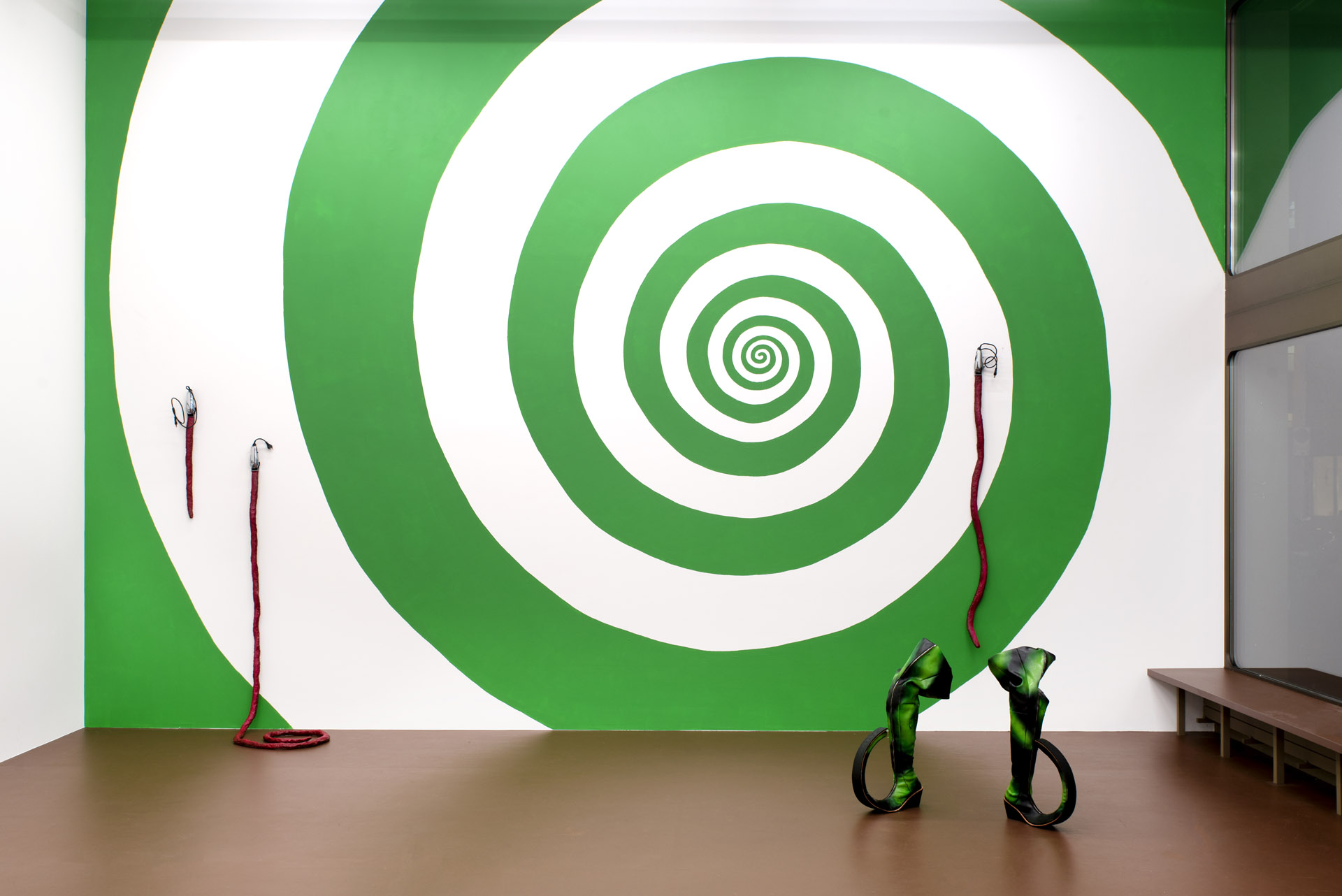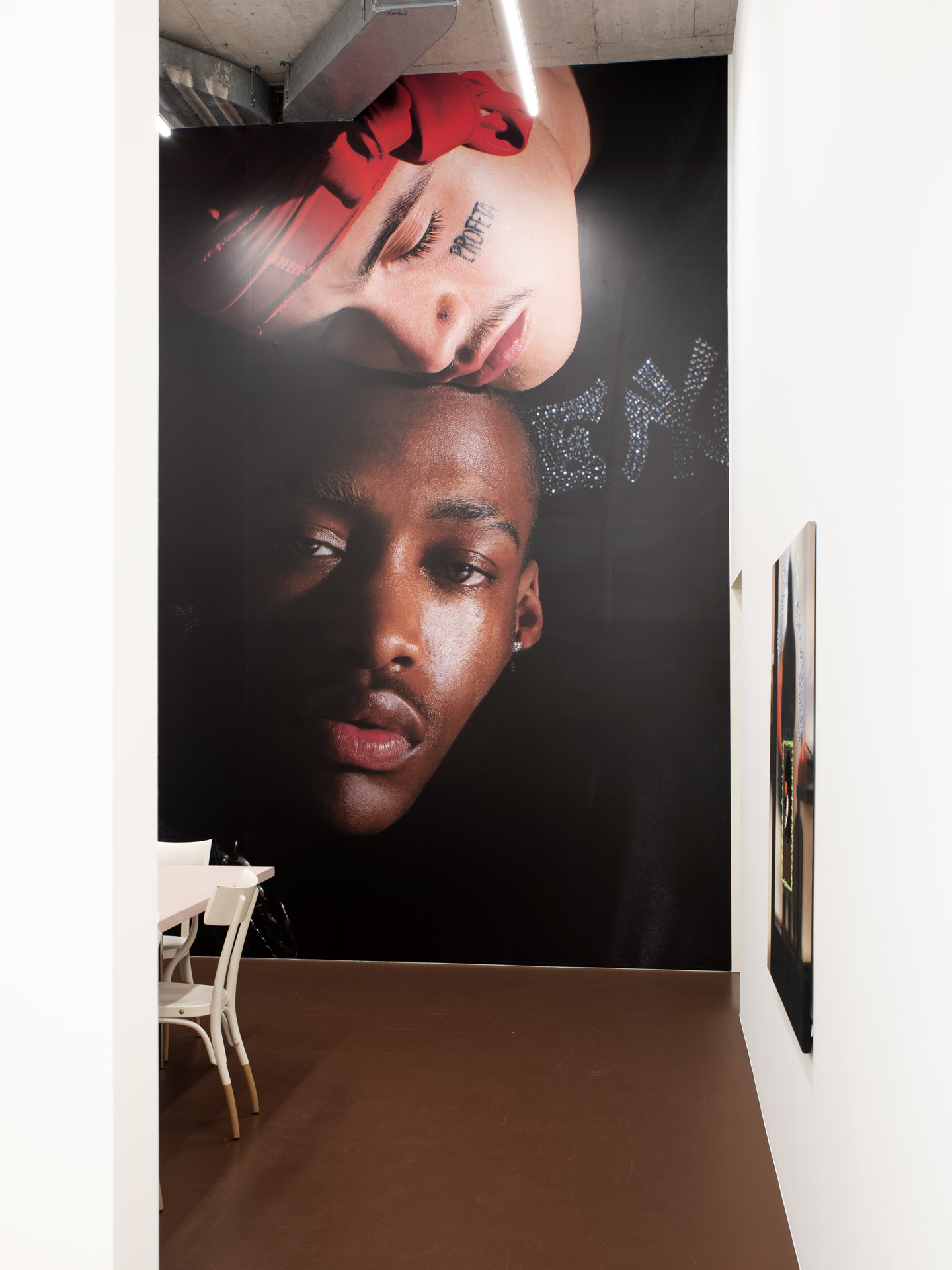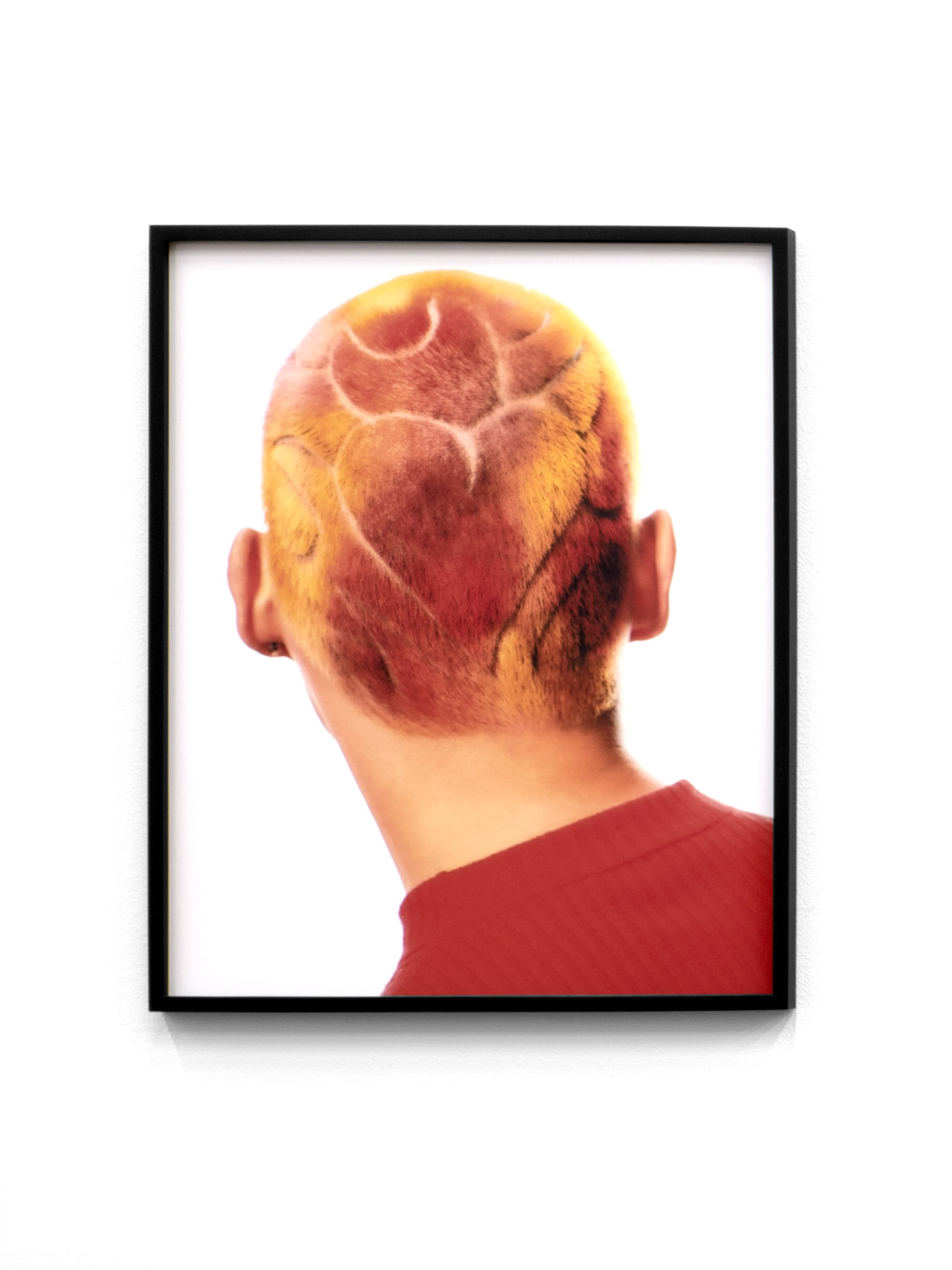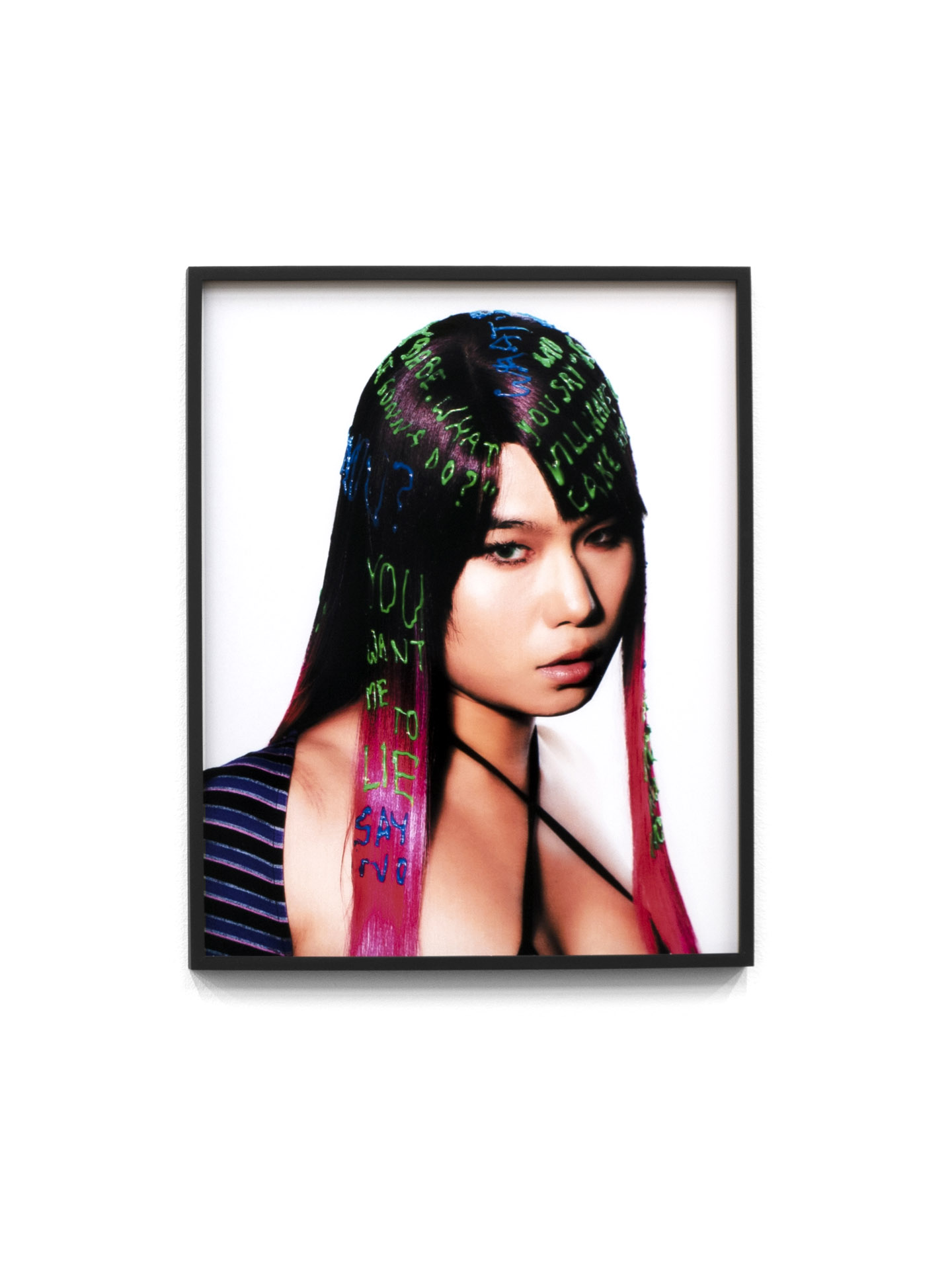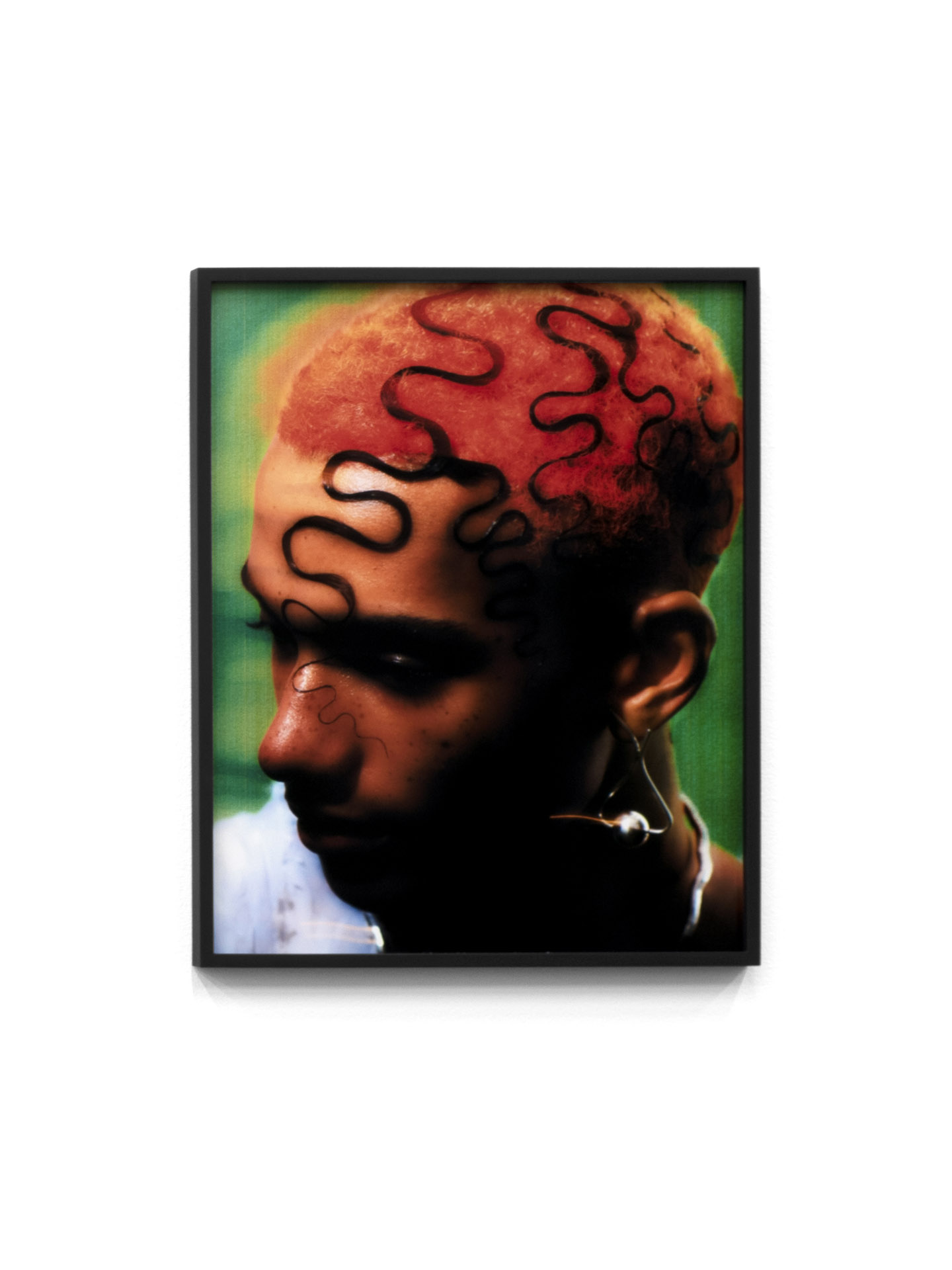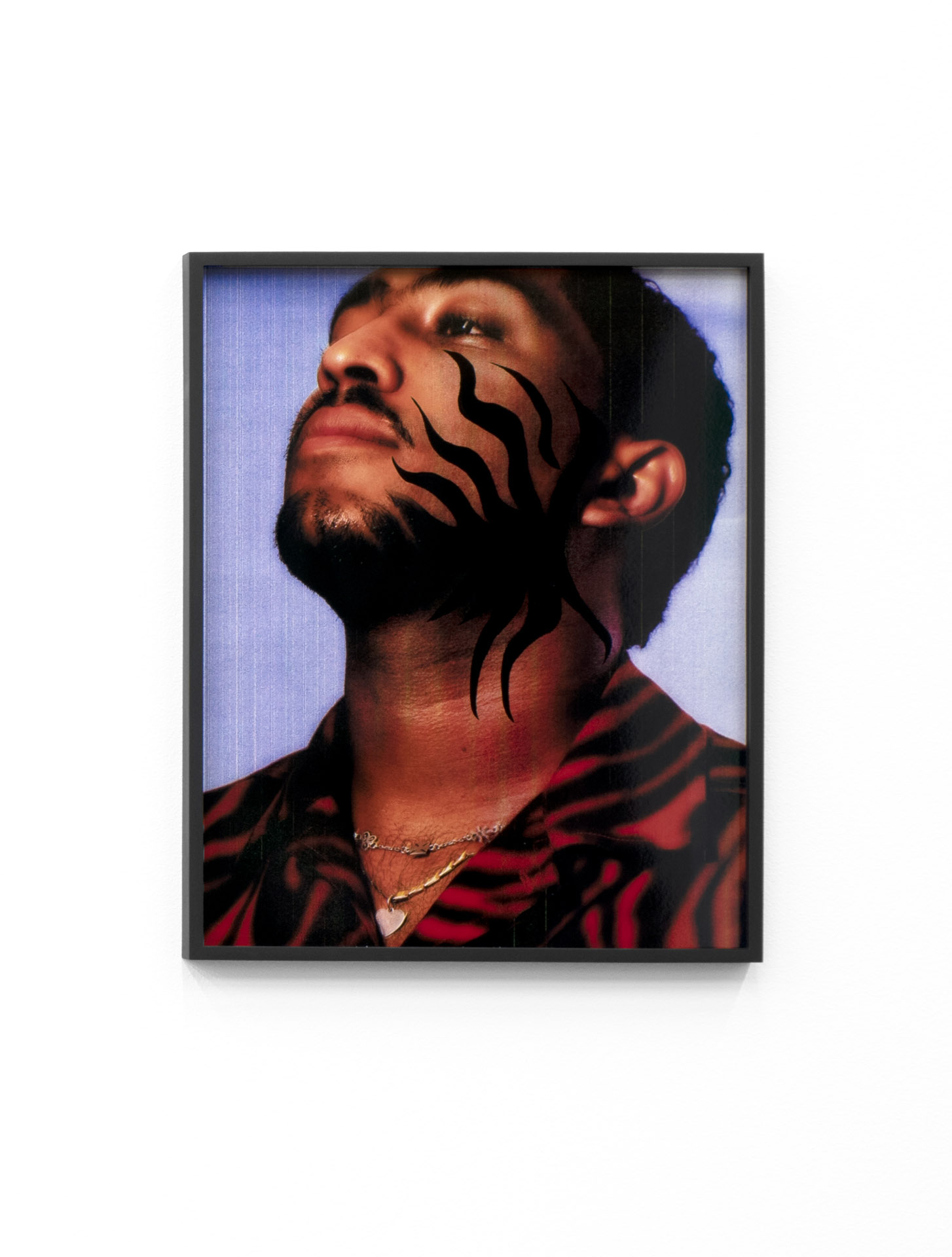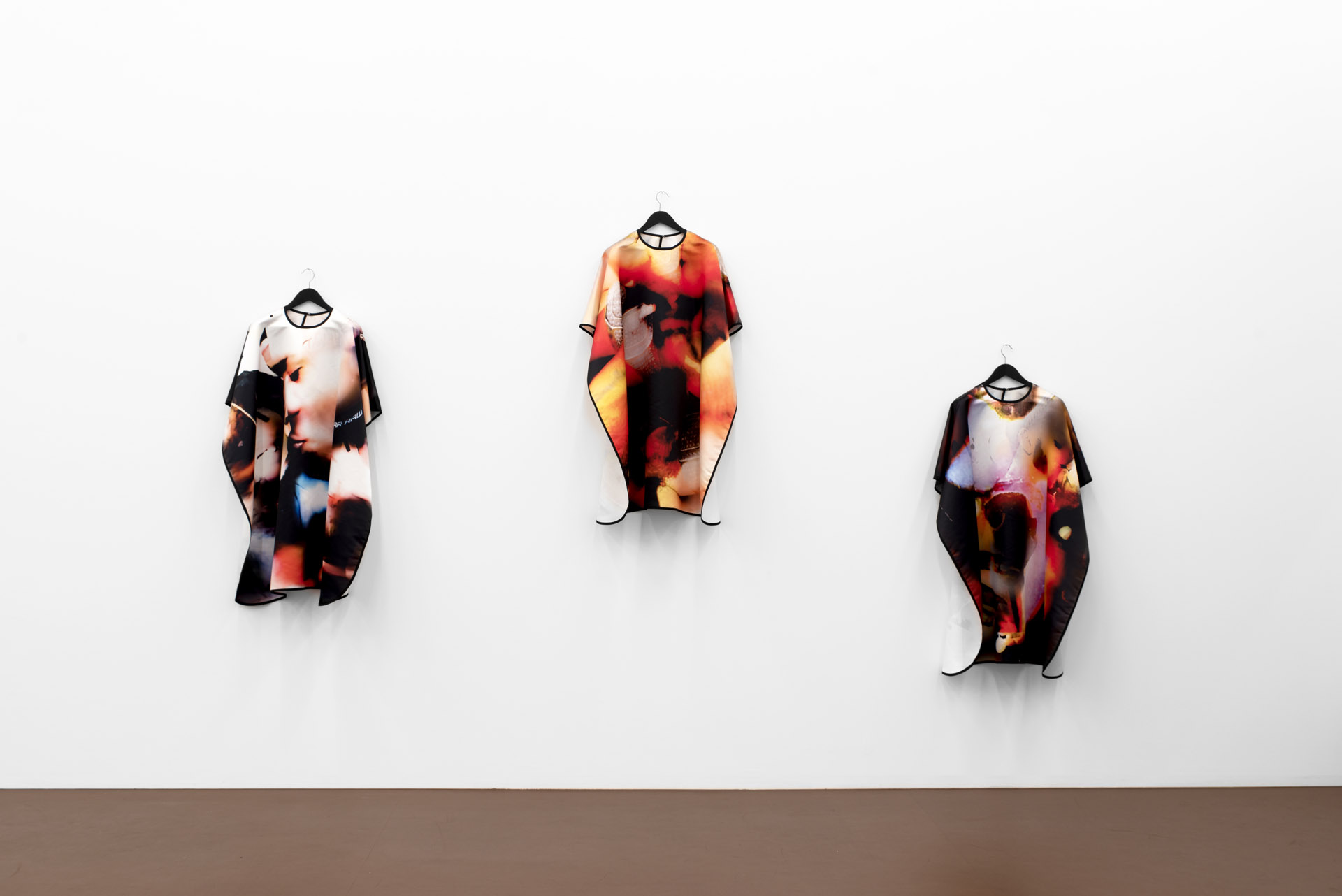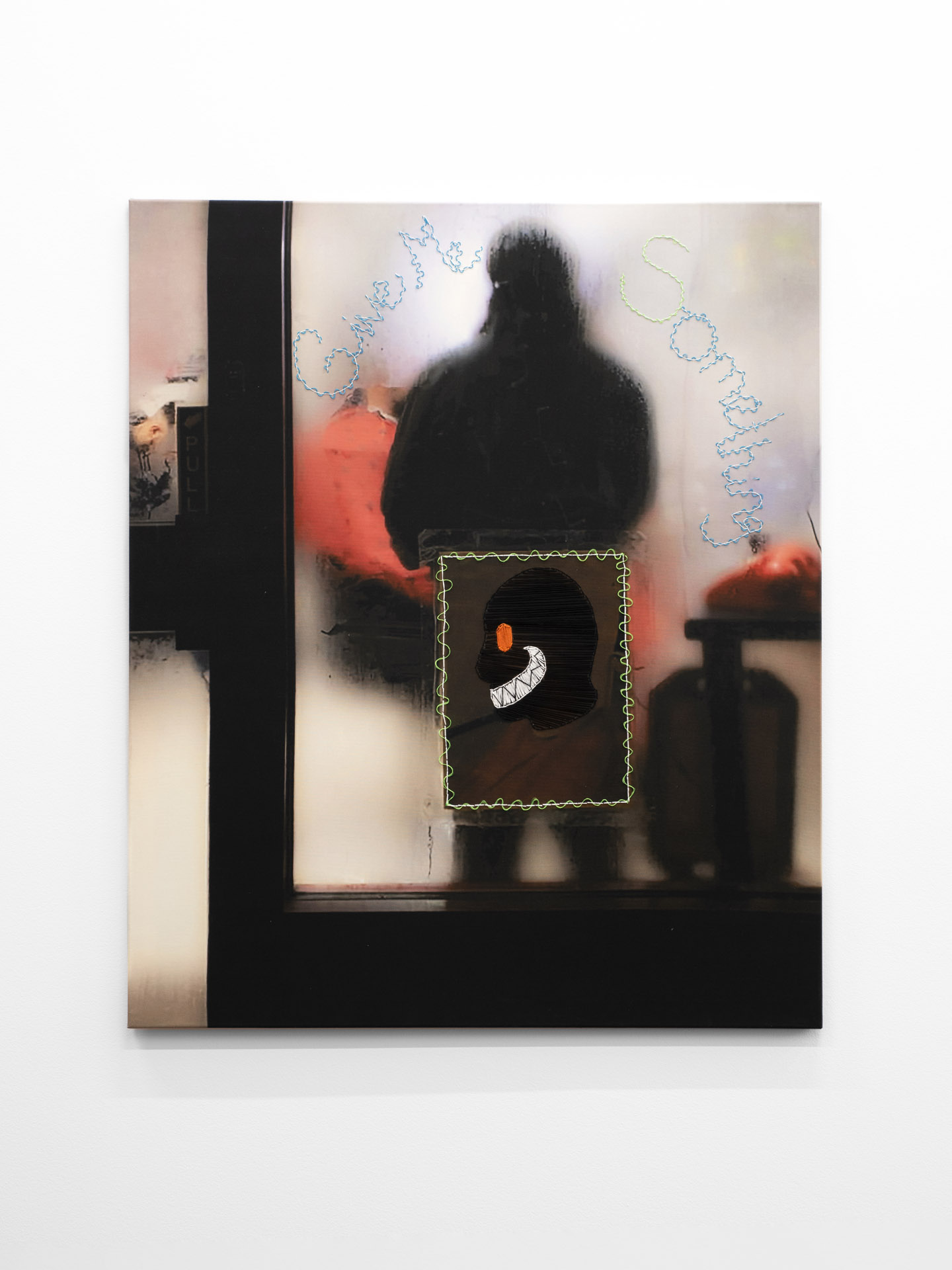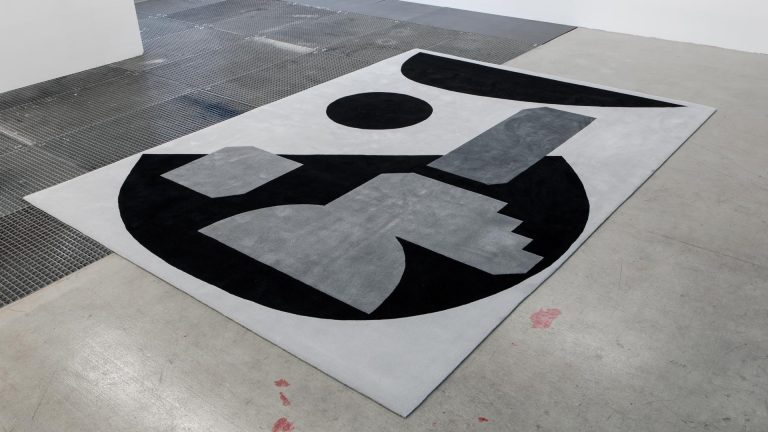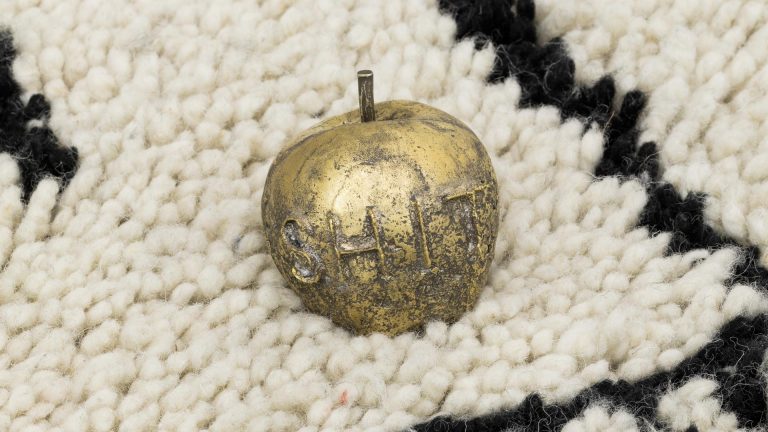Artist: James Bantone
Exhibition title: Cuts of Love
Venue: Karma International, Zurich, Switzerland
Date: November 26, 2021 – January 29, 2022
Photography: all images copyright and courtesy of the artist and Karma International, Zurich
In Cuts of Love, artist and photographer James Bantone extends his previous invocations of the barbershop — a typically heteronormative, masculine-coded site of gathering, communication and adornment — which he imbues with subversive, queer, formal and thematic gestures to express the intimacy of his own memories.
Though there has never existed an autonomous “Black” art, the Black artist today must operate as “post-black,” lest they succumb to the ideological condition of abjection. A somewhat vague yet inevitable neologism, post-black art can be understood as work by artists who, despite being adamant about not being labelled as “Black,” are in fact deeply concerned with redefining complex notions of Blackness previously confused by the white gaze.1 By queering the post-black methodology and saturating his works with notions of horror which, crucially, do not persecute his subjects, Bantone returns this gaze, relaxing the “vigorous but pervious, violent but uncertain” tension between the aberrant other and the phobic I through the invocation of humour and refusal, and as such, addressing the paradox of representational politics.2
Visible from through the gallery’s window to the street, The Fade, named for the ubiquitous hair cutting technique as well as the idiom referring to the act of progressively alienating oneself from a romantic relationship, uses a found image of a fogged up barbershop window which the artist embroidered to include the words “Give Me Something,” and the profile of a fang-toothed, orange-eyed, demonic cartoon. Though the steamy glass suggests a sexual fantasy, the normative context of the barbershop reduces any potential queer fantasy to a punchline: “You know when your barber cuts your hair so good, you wanna fuck him?” A looking glass of sorts, The Fade compels notions of disturbed perception which recur throughout the exhibition.
Flanking one wall of the main gallery space is the exhibition’s titular artwork, an eleven-image portrait series modelled by Bantone’s friends, styled according to his imagination of early 2000s fashion and beauty clicheés, for example, appropriated “tribal” motifs shaved into short hair, or painted onto a synthetic blonde wig. (They are a version of the kind of posters and magazine editorials typically
plastered to a salon wall or window, showing off the details of each model’s hair.) The alterity of these photographs is not caused by the fact of the subjects’ non-white and queer identities, but through the ways Bantone has affected the images as objects: scanning and reprinting each photograph, between printings, scratching and scribbling on the verso sides, suturing together deliberate rips with embroidery thread, deepening shadows, and brightening colours to a point of garishness. By concealing the evidence of his tangible and digital manipulations, Bantone invokes the memory of the image, or rather, the “shadow of memory,” seen here to cause a feeling of returned abjection.3
Bantone’s visual and aesthetic language is owed to his interest in contemporary meme and image sharing culture, and moreover, the visual currencies of early 2000s reality entertainment television as seen on channels such as MTV, which, for years propagated the myth of the Black urban male as lavish and brutal — an emblematic soapstar pitted against the equally over-visualised image of affluent whiteness — now completely subverted in new viral media, such as in the music videos of American rap star Lil Nas X, the so-called “champion of Black bottom culture, reclaiming Black homosexual expression.”4 Bantone reconciles these positions in Profeta, a vinyl sticker showing two lovers, and Cuffin Season 03 – 05, five polyester barber’s cloaks decorated with a pattern of jewels, brand logos and kissing men. But it is in Tongues Untied, a new sculptural group named for the 1989 Marlon Riggs experimental documentary film on the imposed “silence” of Black gay men, that Bantone makes horror of the current post-black aesthetic which, in its flippant style, can reduce queer issues. Gleaming mirrored barber’s clippers with cables coiled into stiff tails bite into long, pink tongues which droop down the walls and lurch across the floor. Though droll, this work does not mock the silence of the documentary’s subjects, but through the abject object-object agreement between tongue and clipper, critiques the frequent generalisation of the Black barbershop as a universal “safe space.”
[1] Byrd, Cathy. “Is There a ‘Post-Black’ Art? Investigating the Legacy of the ‘Freestyle’ Show,” Art Papers 26, no. 6, November 2002, pp.35
[2] Kristeva, Julia. Powers of Horror: An Essay on Abjection, “Approaching Abjection” (New York: Columbia University Press) 1980, pp.7
[3] Kristeva, Julia. Powers of Horror: An Essay on Abjection, “Approaching Abjection” (New York: Columbia University Press) 1980, pp.5
[4] Red Scare Podcast, “The Brocken Buck,” 14’01. 4 August 2021.
[5] Jazil A.Santschi is the creator behind the iconic I S E custom boots. They are the founder of I S E studio since 2017, an underground fashion-related artifacts production based in Zürich. Between DIY-art and made-to-measure manufactured wearables, each of their creations are handmade. Jazil A.Santschi artistic direction is exploring the forms and shapes allowing non-conformity to be visible and protective/protected. Their artistic gesture is to re-appropriate popular western typologies of objects coming from black indigenous genderqueer aesthetics and sublime their fonctions as artifacts of resistance. Variations of the I S E footwear have been worn in Art performances around Europe, US, and South America, by Cõvco, PRICE, Soraya Lutangu Bonaventure and Wu-Tsang’s Moved by the Motion ensemble, among others. Jazil A.Santschi has also been producing custom mades of their I S E design for artistic collaborations with the choreographer Josh Johnson, the New York based stylist UMESI Michael Louis, the author-dramaturge Meloe Gennai, and the artist-photographer James Bantone.
James Bantone, Cuts of Love, 2021, exhibition view, Karma International, Zurich
James Bantone, Cuts of Love, 2021, exhibition view, Karma International, Zurich
James Bantone, Terminal Irony, 2021, Mirror, leather boots and gloves in collaboration with Jazil Santschi I S E, neoprene, polyester thread, foam, acrylic 220 x 200 x 101 cm, 86 5/8 x 78 3/4 x 39 3/4 in
James Bantone, Cuts of Love, 2021, exhibition view, Karma International, Zurich
James Bantone, Cuts of Love, 2021, exhibition view, Karma International, Zurich
James Bantone, Cuts of Love, 2021 C-print, 50 x 40 cm, 19 3/4 x 15 3/4 in
James Bantone, Cuts of Love, 2021 C-print, 50 x 40 cm, 19 3/4 x 15 3/4 in
James Bantone, Cuts of Love, 2021 C-print, 50 x 40 cm, 19 3/4 x 15 3/4 in
James Bantone, Cuts of Love, 2021 C-print, 50 x 40 cm, 19 3/4 x 15 3/4 in
James Bantone, Cuts of Love, 2021 C-print, 50 x 40 cm, 19 3/4 x 15 3/4 in
James Bantone, Cuts of Love, 2021 C-print, 50 x 40 cm, 19 3/4 x 15 3/4 in
James Bantone, Cuts of Love, 2021 C-print, 50 x 40 cm, 19 3/4 x 15 3/4 in
James Bantone, Cuffin Season, 2020-2021, Digital print on polyester, hanger Unique, 125 x 65 x 16 cm, 49 1/4 x 25 5/8 x 6 1/4 in
James Bantone, Tongues Untied 04, 2021, Papier-mâché, clippers, acrylic 83 x 11 x 16 cm, 32 5/8 x 4 3/8 x 6 1/4 in
James Bantone, The Fade, 2021, Digital print on canvas, embroidery, 125 x 105 cm, 49 1/4 x 41 3/8 in

